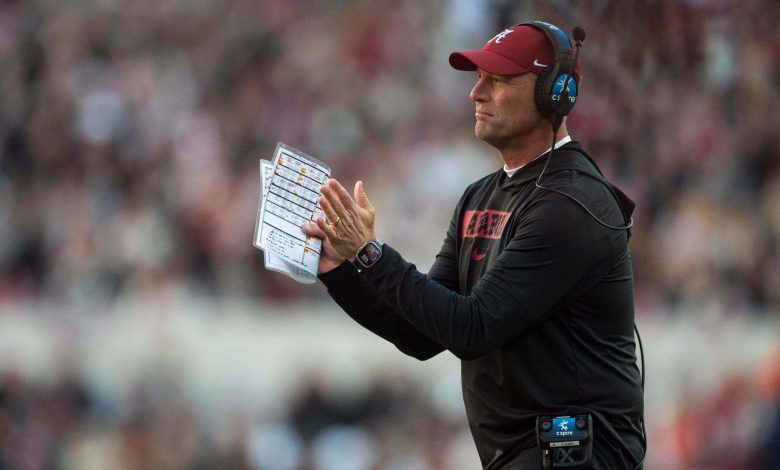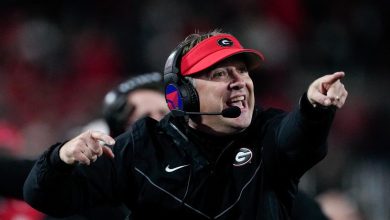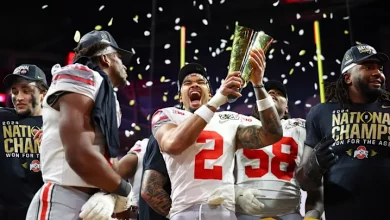Alabama Football looks to return to complementary football in 2025

Alabama football has long been a dominant force in college football, boasting an impressive tradition of championships, elite athletes, and legendary coaching under Nick Saban. For more than a decade, the Crimson Tide has been synonymous with powerful defenses, elite special teams, and an offense that is both versatile and efficient. However, as the landscape of college football has evolved in recent years, Alabama’s identity has undergone a transformation. In particular, the 2020s have seen changes to the offensive side of the ball, where explosive, high-scoring offenses have become more prevalent across the nation.
In 2025, Alabama football is setting its sights on a return to its roots: complementary football. This approach—one that emphasizes the balance of offense, defense, and special teams working in tandem to control the game—was the cornerstone of the team’s success under Saban, particularly in the early years of his tenure. The goal of returning to complementary football is to ensure that all three phases of the game are working in harmony to support one another, leading to a more consistent and sustainable style of winning football.
This article will explore what complementary football means for Alabama, why the program is looking to return to this style in 2025, the challenges that come with it, and the potential benefits for the team’s overall success. It will also consider how Alabama plans to incorporate complementary football principles in the modern college football landscape, where offensive explosiveness is increasingly seen as the path to success.
The Concept of Complementary Football
At its core, complementary football is about synergy between the offense, defense, and special teams. Each phase of the game supports and enhances the other to create a more balanced and effective team. In essence, complementary football ensures that a team does not rely too heavily on any one phase to win games, but rather that all three phases work together to create a well-rounded and resilient program.
In complementary football, the following key elements are essential:
- A Dominant Defense: The defense must be able to stop the opponent’s offense and set up favorable situations for the offense. A dominant defense can force turnovers, create field position advantages, and prevent the opposing team from scoring easily, which in turn gives the offense more opportunities to score.
- An Efficient Offense: The offense must be able to control the clock, sustain drives, and convert key third downs. In addition to scoring points, the offense must also play with patience, understanding that the defense will need support through long, methodical drives that keep the defense fresh and the opponent’s offense off the field.
- Special Teams that Make a Difference: Special teams, often overlooked, play a critical role in complementary football. A strong special teams unit can provide good field position through effective kick returns, pin opponents deep with strong punting, and ensure that field goals and extra points are converted when needed. Special teams can be the deciding factor in close games, and Alabama knows that having an edge in this area can make a significant difference in overall team success.
Under Nick Saban, Alabama’s identity has long been built around complementary football, with elite defenses and efficient offenses working together to grind out victories. However, as offensive strategies evolved and the rise of up-tempo, high-scoring teams became more prevalent, Alabama’s offense began to evolve as well, leading to a shift in team dynamics.
Alabama’s Shift Towards High-Powered Offense
As college football transitioned to a more pass-heavy and fast-paced game in the early 2020s, Alabama adjusted its offensive approach to keep pace. This shift was particularly evident during the 2020 season when the Crimson Tide boasted one of the most dynamic offenses in the country under offensive coordinator Steve Sarkisian. Quarterback Mac Jones led the Tide to a national championship, with wide receivers DeVonta Smith and Jaylen Waddle playing pivotal roles in Alabama’s high-scoring attack.
The success of the 2020 offense, which was built on an explosive passing game, led to expectations that Alabama would continue to embrace a more up-tempo, high-powered offense in subsequent years. However, while the offense was certainly potent, the balance of Alabama’s team became somewhat skewed. The defense, while still strong, began to show signs of vulnerability, particularly in the passing game. This inconsistency on defense and the heavy reliance on the offense to outscore opponents made Alabama less effective in close, physical games against top-tier opponents.
In 2025, Nick Saban appears to recognize that while a potent offense is important, it is not the sole key to success in the modern college football landscape. To return to the pinnacle of college football and compete with the elite programs, Alabama must regain its identity as a well-rounded, complementary football team that can dominate all three phases of the game.
Why Alabama is Returning to Complementary Football
There are several reasons why Alabama is prioritizing a return to complementary football in 2025. These include the need for defensive consistency, the importance of controlling the game clock, the ability to win close games, and the strategic necessity of adapting to the current college football landscape.
- Defensive Rebuilding and Continuity: After several seasons in which Alabama’s defense struggled to maintain its traditional dominance, especially in the secondary, returning to complementary football is seen as a way to balance the defense’s needs with those of the offense. By returning to a more traditional, balanced offense that controls the clock, Alabama will be able to keep its defense fresher and avoid putting too much pressure on the defense to carry the team.
Alabama’s defense under Saban has always been built on a foundation of discipline, toughness, and physicality. To compete for championships in 2025, Alabama needs to continue to recruit and develop elite defensive talent while also ensuring that the defense remains the backbone of the team. Complementary football will allow the defense to perform at its best by minimizing its exposure to high-powered offenses.
- Control the Game Clock: One of the most important aspects of complementary football is controlling the time of possession. Alabama has traditionally been a team that excels in controlling the clock, wearing down opponents with a strong running game and methodical offensive drives. In the modern era, where offenses are more often built to score quickly, controlling the game clock has become even more important for maintaining balance and dictating the pace of play.
By embracing complementary football, Alabama will be able to keep its offense on the field for longer periods, limiting the opportunities of the opposing offense and allowing its defense to stay fresh. This style of play will be especially important in close games, where field position and time of possession often become decisive factors.
- Winning Close Games: In college football, especially in the high-stakes SEC environment, close games are inevitable. The ability to win in tight situations, often through a strong defense and a reliable special teams unit, is what separates championship teams from those that fall short. Complementary football provides the framework for succeeding in these tight games by ensuring that no single phase of the game is relied upon too heavily.
Alabama’s history under Nick Saban is full of close, physical battles, and the team’s ability to win these games has been a hallmark of its success. Returning to a complementary football approach will give Alabama the tools it needs to win in these situations, relying on all three phases to come through when it matters most.
- Adapting to the Current College Football Landscape: The shift toward faster, more explosive offenses has been a defining feature of college football over the past decade. While Alabama has adapted to these changes with successful offenses of its own, there is growing recognition that balance is key. Complementary football allows Alabama to adapt to the changing landscape while still maintaining its identity as a team that can win in a variety of ways.
By balancing an efficient offense with a strong defense and special teams, Alabama can compete with high-scoring teams while still controlling the game. This approach not only allows for success in high-scoring affairs but also enables Alabama to dominate in games where defense and field position become crucial.
Key Components of Alabama’s 2025 Strategy
As Alabama looks to return to complementary football in 2025, there are several key components that will shape the team’s approach:
- Quarterback Play and Offensive Balance: Alabama’s offense in 2025 will likely rely on a more balanced approach, with a focus on both the run and the pass. The quarterback position will be crucial, as Alabama will need a player who can efficiently manage the game, make key throws, and avoid turnovers. The emergence of a strong running game, potentially featuring a deep backfield, will help control the clock and keep opposing defenses on their heels.
- Defensive Excellence: The defense will need to return to its elite status, with a focus on stopping both the run and the pass. Alabama’s defensive line will be pivotal in dominating the trenches, while the secondary will need to improve its coverage to prevent big plays. Saban’s defensive scheme, which emphasizes physicality, discipline, and depth, will be central to the team’s success.
- Special Teams Contributions: Special teams will play a key role in complementary football, as Alabama will need strong performances in kick returns, punt coverage, and field goal kicking. A reliable special teams unit can create momentum shifts and provide Alabama with field position advantages, crucial in tight games.









